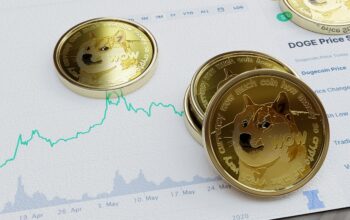Europe Faces Moderate Growth Amid Global Headwinds The European Union anticipates a modest GDP growth rate of about 1.1% for 2025, mirroring 2024’s performance. Despite some expected rebounds in investment and residential construction, economic growth remains subdued due to ongoing global uncertainties—like trade tensions and volatile market responses impacting financing conditions. Businesses remain cautious, with tightened credit standards even before early 2025’s financial turmoil. On the bright side, infrastructure and R&D investments are expected to pick up, partly driven by digital transformation needs and recovery funds.
Key Economic Data and Central Bank Moves in Asia and Europe Multiple countries are releasing critical economic data soon, including inflation figures from France, Germany, Italy, and Spain, along with GDP and PMI reports from Canada, India, and China. Central banks in New Zealand and South Korea are weighing potential interest rate cuts amid tariff uncertainties, aiming to stimulate growth in their increasingly fragile economies.
US Market Volatility and Debt Rating Downgrades The US stock market has experienced notable swings in 2025. Certain low-volatility stocks like Berkshire Hathaway and Coca-Cola have weathered downturns better than most, providing stability during selloffs. Meanwhile, Moody’s downgraded the US sovereign credit rating citing the soaring federal deficit—now at a staggering $36 trillion—and high costs of rolling over debt under persistent high interest rates. This downgrade caused long-term Treasury yields to spike, impacting borrowing costs nationwide.
The Influence on Investors and Borrowers Rising Treasury yields translate directly to higher mortgage and loan rates, making borrowing costlier for consumers and businesses alike. Investors are cautious, watching Congressional budget negotiations closely as new deficit-increasing bills advance. Meanwhile, large tech companies like Tesla, Microsoft, and Amazon faced stock price declines amid this uncertainty.
Summary 2025’s financial landscape so far feels like navigating through foggy waters: slow economic growth in Europe held back by global instability, cautious central banks ready to act, and volatile US markets shaken by debt concerns. For working professionals and investors, focusing on stable, low-volatility assets might be a wise move as governments and companies adjust to evolving economic realities.
Practical Takeaways:
- Keep an eye on inflation and GDP updates from major economies.
- Understand that rising government debt affects interest rates and borrowing.
- Consider diversification towards low-volatility stocks for portfolio stability.
- Watch central bank policy changes as potential signals for market shifts.
- Stay informed on how geopolitical and trade issues ripple into economic forecasts.
This blend of measured growth amid uncertainty paints a practical picture for anyone engaged in finance today.
References:
- https://www.spglobal.com/marketintelligence/en/mi/research-analysis/week-ahead-economic-preview-week-of-26-may-2025.html
- https://economy-finance.ec.europa.eu/economic-forecast-and-surveys/economic-forecasts/spring-2025-economic-forecast-moderate-growth-amid-global-economic-uncertainty_en
- https://www.nerdwallet.com/article/investing/best-performing-stocks
- https://www.morningstar.com/markets/stock-strategies-that-are-paying-off-2025
- https://www.nasdaq.com/articles/stock-market-news-may-21-2025
- https://www.gatesnotes.com/books/reading-lists/reader/summer-books-2025
- https://www.investopedia.com/dow-jones-today-05222025-11739858
- https://www.congress.gov/119/crec/2025/05/21/171/86/CREC-2025-05-21.pdf



